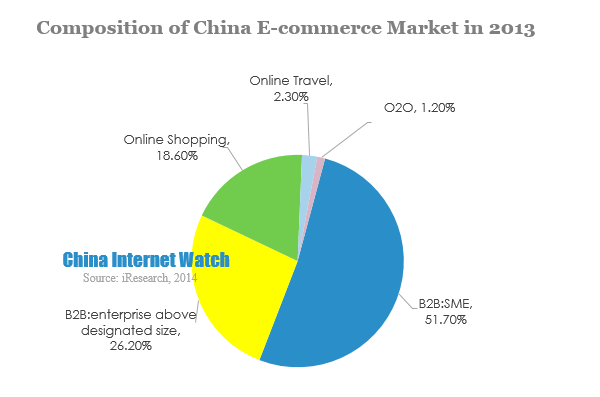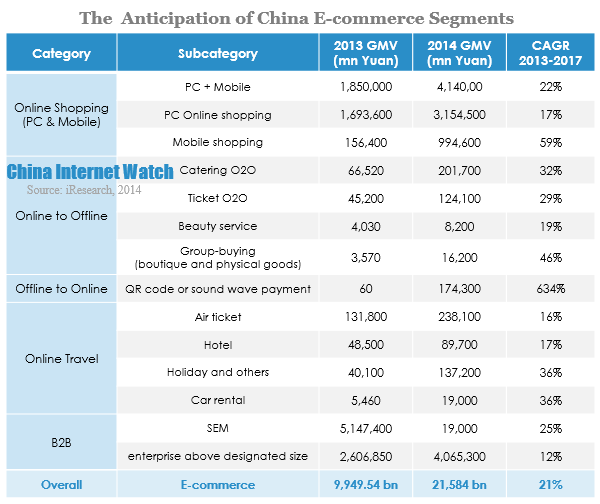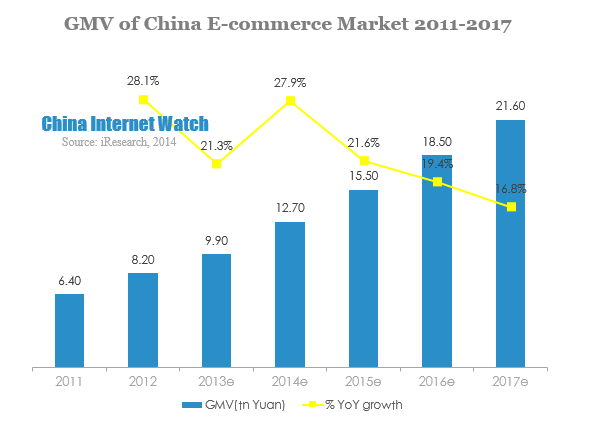GMV of China E-commerce increased 21.3% last year to 9.9 trillion yuan (USD 1.63 trillion), according to iResearch. The growth was expected to slow down in coming years, and the e-commerce market will reach 21.6 trillion yuan (USD 3.53 trillion) in 2017.
As the data showed, the GMV of online shopping was estimated to account for 7.8% of the total retail sales of social consumer goods in 2013, with a growth of 1.6 percentage point.

In terms of the structure of e-commerce market in 2013, small and medium-size enterprises'(SME) B2B accounted for 51.7%, and B2B of enterprises above designated size took up 26.2%; the proportion of B2B summed up to 77.9%. The market share of online shopping, online travel and O2O was 18.6%, 2.3% and 1.2%, respectively.
According to iResearch, the domestic and foreign trade environment would improve after 2013. In the next 3 to 4 years, SME’s B2B will expand in fields such as platform transaction, value-added service and big data of platform, and the overall B2B market would increase steady. The market share of online shopping was higher than last year. Although online travel took low proportion, it kept over 30% growth rate driven by the developing segments like air ticket and hotel booking.
Among the segments of China e-commerce market, SME’s B2B was still the largest part; the GMV of SEM’s B2B was predicted to hit 12.4 trillion yuan (USD 2.03 trillion) in 2017, with compound growth rate of 25%. Moreover, O2O and mobile shopping would be the fastest developing segments in the future.

In respect of mobile shopping, the traditional e-commerce giants were focusing on developing user habit of mobile client. As the network coverage system maturing, more smartphone and tablet users started to utilize fragmentary time, and mobile shopping was a good option for filling time. Meanwhile the growth of online shopping on PC slowed down, making mobile market the new growth point. It motivated e-commerce enterprises to seize the mobile shopping market.
For O2O, the O2O market of local service was the early starter in traditional industry and had made some development. O2O of catering and ticket service began to take shape. Reverse O2O (offline to online) service such as QR code and sound wave payment were just emerging, however, as the technology matures, the market may exceed 100 billion in the future.
